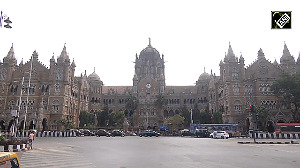The government, it should be remembered, has made it clear that its own intervention through progressive Keynesian spending will not be there but it will be an active enabler, notes Madan Sabnavis
 The GDP growth estimate for the first quarter has come higher than expectation at 5.7 per cent.
The GDP growth estimate for the first quarter has come higher than expectation at 5.7 per cent.
Evidently, the economy has come out of the low growth phase in the past two years and it does appear the economy will continue to remain in the plus-five per cent range.
The only negative factor is the sub-normal monsoon, which will affect farm output.
The government has taken several steps to revive investment, through better clearances and removal of administrative roadblocks.
Hopefully, this should translate to higher investment.
The Q1 number indicates capital formation has increased only marginally or has been unchanged, depending on whether we look at it in constant terms or market prices.
Evidently, the second and third quarters will hold the clue to sustenance of growth in these areas, as the spending season starts from August and lasts till December.
In the past two years, consumer demand has been low, affecting industrial growth.
However, this optimism should be bordered with caution.
First, the government has played an important role in spending this time, with the fiscal deficit also being very high in the first four months of the financial year (April-July).
However, given the commitment to the number of 4.1 per cent of GDP for the fiscal deficit, there is little room for substantial contribution from this end.
Second, low farm income growth can upset the consumer demand story, as the meteorological department has almost called this a drought year.
So, farm spending could be constrained.
Third, inflation continues to be a problem, especially on the food side.
This means the Reserve Bank will not be lowering rates any time soon.
Therefore, while growth has been robust this quarter, sustaining it at this level will be a challenge.
Also, remember a part of this growth has been due to the low base effect, with only agriculture and the finance sector maintaining momentum over last year.
Construction growth has been positive, indicating infrastructure work is on, though it is to be seen whether this is maintained -- typically, construction work slows in the monsoon.
As the low base effect will persist in the next two quarters, there is room for optimism this year.
The government, it should be remembered, has made it clear that its own intervention through progressive Keynesian spending will not be there but it will be an active enabler.
For this to work, things need to change fast but both higher demand and lower inflation will take time to happen.
The second quarter (Q2, July to September) will not be quite exciting, as it is the monsoon time, when things are subdued. Q3 and Q4 would be the key quarters to watch.
Madan Sabnavis is chief economist, CARE Ratings













 © 2025
© 2025